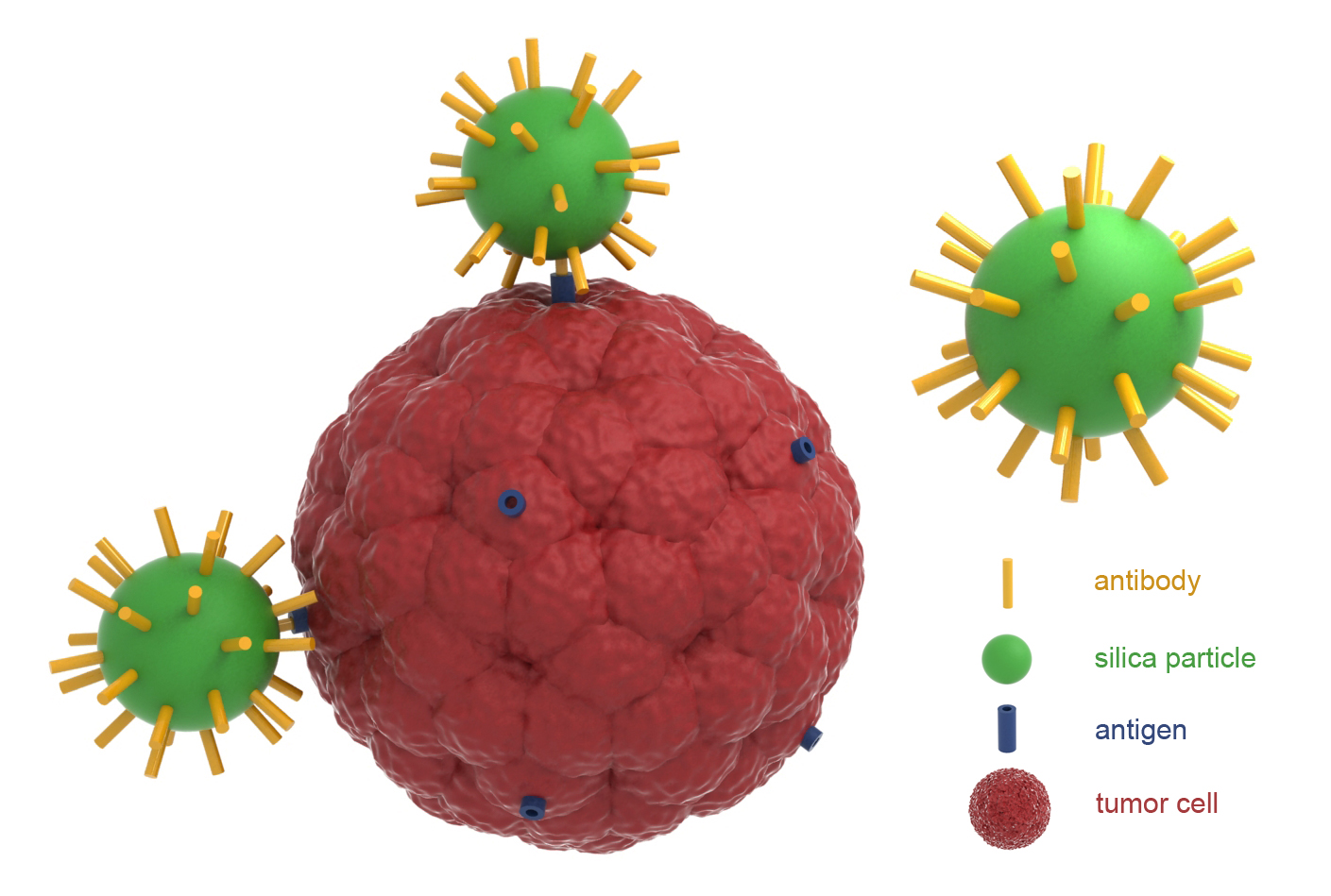Denisa Lizoňová, Samuel Frei, Lucie Kopačková, Pavlína Michaláková, Pavel Zelenka, Anna Pittermannová, František Štěpánek
Composite microparticles or microcapsules for targeted delivery of active substances such as antibacterial agents or pharmaceutical compounds are of both practical and fundamental interest. The purpose of such delivery vehicles is to store the active compound at a high concentration, transport it through an environment in which the presence of the active compound is not required (or not desirable), and eventually anchor to the target site and release the encapsulated payload either spontaneously or upon an external stimulus. For the design a targeted delivery system, not only the release kinetics of the encapsulated compound from the microcapsule but also the specific interactions of the microcapsules with the target point of controlled release are crucial.
High targeting specificity could be achieved while employing Antibody (Ab) – Antigen (Ag) interactions. Modification of the nanoparticles’ surface (silica, liposomes etc.) with monoclonal antibody (IgG) specific for the tumor-associated antigen enables targeting the tumor tissue in vivo via bloodstream and allows to study interactions between nanoparticles and cells in vitro. Further surface modifications providing stealth properties of the nanoparticles prolong their circulation time and reduce undesirable accumulation in the RES (Reticulo-Endothelial System) organs.
Capability of the Ab-modified nanoparticles to bind specific Ag has been studied in microfluidic cell, ELISA-like tests (Enzyme-Linked Immuno Sorbent Assay) and flow cytometry. At the present time, our research focuses on the surface modifications which reduce opsonisation of the nanoparticles and improve their pharmakocinetic parametres and biodistribution in vivo.

Schematic illustration of antibody modified SiO2 nanoparticles and their interactions with transmembrane antigen of tumor cell.
Publications:
- Majerská M., Jakubec M., Klimša V., Rimpelová S., Král V., Štěpánek F., “Microgel bioreactors for cancer cell targeting by pH dependent generation of radicals”, Mol. Pharm. (2019)
- Lizoňová D., Majerská M., Král V., Pechar M., Pola R., Kovář M.,Štěpánek F., “Antibody-pHPMA functionalised fluorescent silica nanoparticles for colorectal carcinoma targeting”, RSC Adv. 8, 21679-21689 (2018)
- Tokárová V., Pittermannová A., Král V., Řezáčová P., Štěpánek F., “Feasibility and constraints of particle targeting using antigen-antibody interaction”, Nanoscale 5, 11490-11498 (2013)
Conference poster presentations:
 Karasová A., Tokárová V., Král V., Štěpánek F. An appropriate way of antibody coupling to SiO2 nanoparticles, European Molecular Imaging Meeting – EMIM 2015, Tübingen, Germany
Karasová A., Tokárová V., Král V., Štěpánek F. An appropriate way of antibody coupling to SiO2 nanoparticles, European Molecular Imaging Meeting – EMIM 2015, Tübingen, Germany Karasová A., Lizoňová D., Sarvašová N., Majerská M., Král V., Štěpánek F. Surface modification and colloidal stability of nano-carriers in psychological media, 29th Conference of the European Colloid and Interface Society ECIS 2015, Bordeaux, France
Karasová A., Lizoňová D., Sarvašová N., Majerská M., Král V., Štěpánek F. Surface modification and colloidal stability of nano-carriers in psychological media, 29th Conference of the European Colloid and Interface Society ECIS 2015, Bordeaux, France
